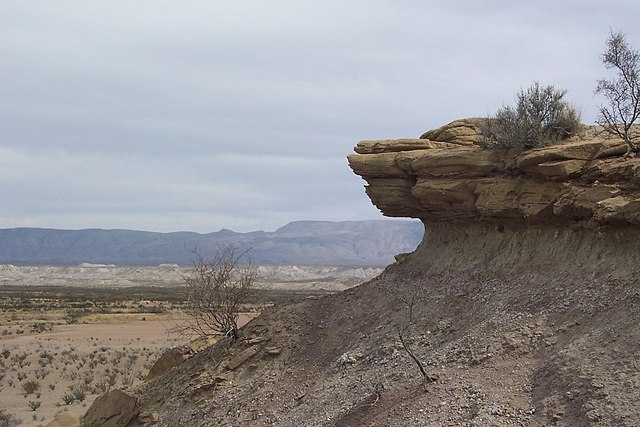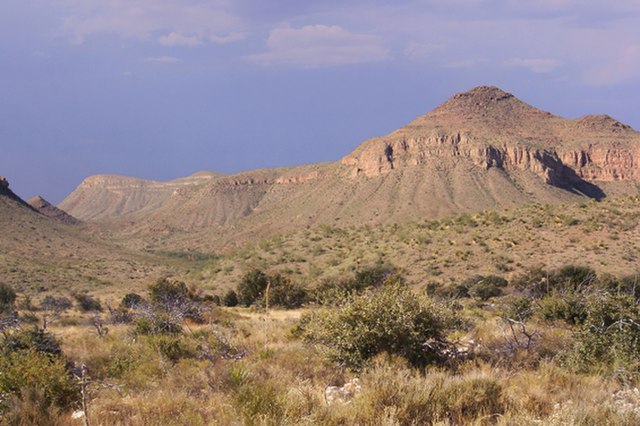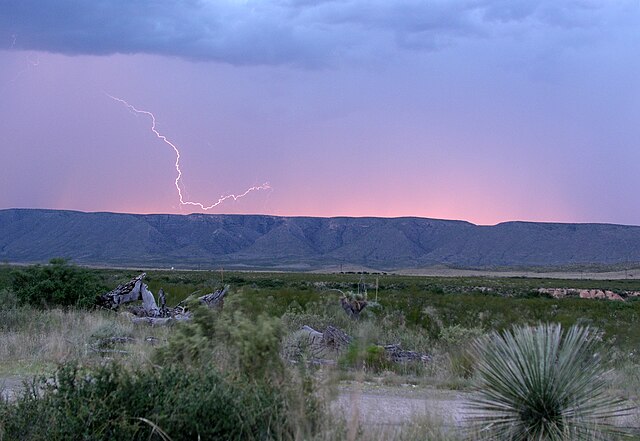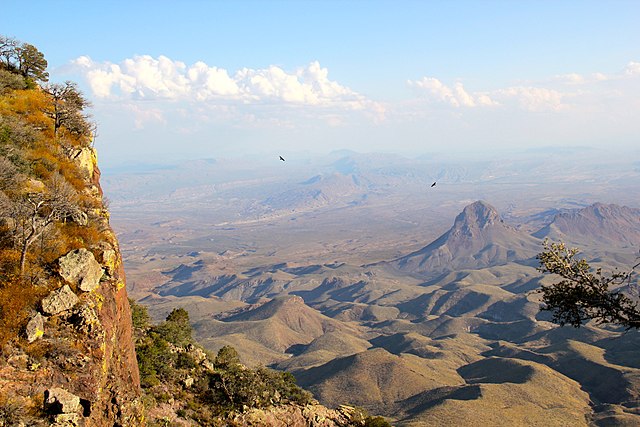Have you ever wondered what secrets lie hidden in North America’s largest desert? The Chihuahuan Desert stretches across an impressive 450,000 square kilometers, making it a true continental giant that most travelers have barely scratched the surface of exploring. This remarkable ecosystem spans across Mexico, Texas, New Mexico, and Arizona, creating a diverse landscape that’s far more complex and beautiful than the stereotypical image of endless sand dunes.
Unlike its more famous cousins like the Mojave or Sonoran deserts, the Chihuahuan Desert remains relatively unexplored by mainstream tourism. This means you’ll find authentic wilderness experiences, untouched vistas, and wildlife encounters that feel genuinely wild and unspoiled. From the otherworldly white gypsum dunes of White Sands to the mysterious depths of Carlsbad Caverns, this desert offers adventures that will challenge your preconceptions about what a desert can be.
What Makes the Chihuahuan Desert Unique?
The Chihuahuan Desert isn’t just another arid landscape – it’s a geographic marvel that defies expectations at every turn. What sets this desert apart is its incredible elevation range, stretching from 1,000 feet above sea level to over 6,000 feet in its mountainous regions. This dramatic topography creates microclimates that support an astonishing variety of life forms.
Geographic Location and Boundaries
Spanning approximately 280,000 square miles, the Chihuahuan Desert primarily occupies the Mexican states of Chihuahua, Coahuila, Durango, and Zacatecas, while extending northward into Texas, New Mexico, and a small portion of Arizona. The desert’s boundaries are naturally defined by the Sierra Madre Oriental to the east and the Sierra Madre Occidental to the west, creating a vast basin-and-range landscape.
The Rio Grande cuts through the heart of this desert, creating the famous Big Bend region where the river makes a dramatic U-turn. This geographic feature has shaped both the landscape and the cultural history of the region, serving as a natural border between the United States and Mexico.
Climate and Weather Patterns
The Chihuahuan Desert experiences a unique climate pattern that distinguishes it from other North American deserts. Unlike the winter-wet Mediterranean climate of the Mojave or the bi-seasonal precipitation of the Sonoran, the Chihuahuan Desert receives most of its rainfall during the summer months, typically from July through September.
This summer rainfall pattern, combined with the desert’s high elevation, creates surprisingly mild temperatures compared to lower-elevation deserts. Summer highs typically range from 90-100°F, while winter temperatures can drop below freezing, especially in the northern regions. The desert receives an average of 8-12 inches of annual precipitation, with some mountainous areas receiving significantly more.
Wildlife and Biodiversity in the Chihuahuan Desert

The Chihuahuan Desert supports an incredibly diverse array of wildlife, with over 3,500 plant species and numerous endemic animals that have adapted to this unique environment. The desert’s varied elevation and microhabitats create ecological niches that support everything from tiny desert mice to massive elk herds in the mountainous regions.
Endemic Species You Won’t Find Anywhere Else
The isolation and unique environmental conditions of the Chihuahuan Desert have led to the evolution of numerous endemic species. These creatures have developed remarkable adaptations to survive in this challenging environment, making them fascinating subjects for wildlife enthusiasts and researchers alike.
Desert Bighorn Sheep
The desert bighorn sheep represents one of the most iconic and impressive mammals of the Chihuahuan Desert. These magnificent animals have adapted to the rocky, mountainous terrain by developing exceptional climbing abilities and the capacity to go for extended periods without water. Their curved horns can weigh up to 30 pounds and grow throughout their lifetime, making mature rams particularly impressive to observe.
These sheep navigate the desert’s rocky outcrops and steep canyon walls with remarkable agility, often spotted on seemingly impossible cliff faces. Their ability to locate and remember water sources across vast territories makes them perfectly suited to the desert’s challenging conditions.
Kangaroo Rats and Small Mammals
The Chihuahuan Desert is home to several species of kangaroo rats, including the banner-tailed kangaroo rat, which has developed extraordinary adaptations for desert survival. These small mammals can survive their entire lives without drinking water, obtaining all necessary moisture from the seeds they consume.
Their powerful hind legs allow them to leap up to 9 feet in a single bound, helping them escape predators and navigate the desert terrain efficiently. Their kidneys are so efficient at conserving water that their urine is more concentrated than seawater, representing one of nature’s most impressive examples of water conservation.
Bird Species and Migration Patterns
The Chihuahuan Desert serves as a crucial stopover point for migratory birds traveling along the Central Flyway. Over 400 bird species have been documented in the region, ranging from tiny hummingbirds to massive golden eagles. The desert’s varied habitats support both resident species and seasonal migrants.
Roadrunners, perhaps the most famous desert bird, are common throughout the region and can reach speeds of up to 20 mph when chasing prey. These remarkable birds are skilled hunters, capable of taking down rattlesnakes and other dangerous prey through their speed and agility.
The desert also supports healthy populations of raptors, including red-tailed hawks, peregrine falcons, and great horned owls. These predators play crucial roles in maintaining the desert’s ecological balance by controlling rodent populations.
Flora of the Chihuahuan Desert
The plant life of the Chihuahuan Desert is remarkably diverse, with species ranging from tiny succulents to towering yucca trees. The desert’s flora has evolved numerous strategies for surviving in this arid environment, including water storage, deep root systems, and protective waxy coatings.
Iconic Desert Plants
The lechuguilla agave serves as the signature plant of the Chihuahuan Desert, covering vast areas with its distinctive rosette pattern. This plant can live for decades before producing a single spectacular flower stalk that can reach heights of 15 feet. The lechuguilla’s leaves contain fibers that were traditionally used by indigenous peoples for making rope, baskets, and other essential items.
Ocotillo plants create dramatic silhouettes across the desert landscape, their long, thin stems reaching skyward like giant fingers. After rainfall, these seemingly dead sticks burst into life, producing bright green leaves and stunning red flowers that attract hummingbirds from miles around.
The desert also supports extensive grasslands dominated by various species of grama grass, creating a landscape that’s quite different from the stereotypical cactus-covered desert many people imagine.
Lechuguilla Cave Formations
The lechuguilla agave plays a crucial role in the formation of the famous Lechuguilla Cave system beneath Carlsbad Caverns National Park. As these plants die and decompose, they create acidic conditions that slowly dissolve the limestone bedrock, contributing to the ongoing formation of one of the world’s most spectacular cave systems.
Seasonal Blooms and Wildflowers
The Chihuahuan Desert transforms dramatically during its brief wildflower seasons, typically occurring in spring and after summer rains. Desert marigolds, ghost plants, and desert lupines create spectacular displays of color that contrast beautifully with the desert’s typically muted palette.
These wildflower blooms are not only beautiful but also crucial for the desert’s ecosystem, providing nectar for pollinators and seeds for numerous wildlife species. The timing and intensity of these blooms depend heavily on rainfall patterns, making each year’s display unique and unpredictable.
Top Destinations to Visit in the Chihuahuan Desert

The Chihuahuan Desert offers numerous spectacular destinations that showcase the region’s diverse landscapes and unique ecosystems. From underground caverns to towering sand dunes, each location provides a different perspective on this remarkable desert environment.
Big Bend National Park
Big Bend National Park represents the crown jewel of Chihuahuan Desert destinations, protecting over 800,000 acres of pristine desert wilderness. The park’s location along the Rio Grande creates a unique international ecosystem where American and Mexican wildlife and plant species intermingle freely.
The park offers everything from gentle nature walks to challenging backpacking expeditions. The Santa Elena Canyon provides a dramatic example of the Rio Grande’s power, with towering limestone cliffs rising directly from the river’s edge. Meanwhile, the Chisos Mountains offer cooler temperatures and different ecosystems, including rare desert woodlands.
Visitors can explore historic sites like the Castolon Historic District, where remnants of early 20th-century farming and trading operations provide insights into the region’s human history. The park’s dark skies make it one of the best stargazing destinations in North America, with minimal light pollution allowing for spectacular views of the Milky Way.
Carlsbad Caverns National Park
Carlsbad Caverns National Park protects one of the world’s most impressive cave systems, with over 119 known caves carved from the same limestone reef that once lay beneath an ancient sea. The park’s famous Big Room stretches over 14 acres and reaches heights of 255 feet, creating an underground landscape that feels more like a natural cathedral than a cave.
The park’s bat flight program offers visitors the opportunity to witness hundreds of thousands of Brazilian free-tailed bats emerging from the cave entrance each evening during summer months. This natural spectacle represents one of the most impressive wildlife displays in North America.
Beyond the main cavern tour, the park offers more adventurous spelunking opportunities for experienced cavers, including guided tours through less developed sections of the cave system. The park’s surface desert environment also provides excellent hiking opportunities and wildlife viewing.
White Sands National Park
White Sands National Park protects the world’s largest gypsum dune field, covering 275 square miles of brilliant white sand dunes that create an otherworldly landscape. These dunes are constantly shifting and changing, driven by prevailing winds that can move individual dunes up to 30 feet per year.
The park’s unique ecosystem supports several endemic species that have adapted to the white sand environment, including the white sands pupfish and several subspecies of lizards and mice that have evolved lighter coloration to match their surroundings.
Visitors can explore the dunes through various hiking trails, including the popular Dune Life Nature Trail and the more challenging Alkali Flat Trail. The park also offers unique recreational opportunities like sand sledding and full-moon hikes that showcase the dunes’ ethereal beauty under moonlight.
Best Time to Visit the Chihuahuan Desert
Timing your visit to the Chihuahuan Desert can make the difference between a challenging endurance test and a comfortable, enjoyable adventure. The desert’s climate varies significantly throughout the year, with each season offering different advantages and challenges for visitors.
Spring Season (March-May)
Spring represents the ideal time for most visitors to explore the Chihuahuan Desert. Temperatures are comfortable, typically ranging from 60-80°F during the day and dropping to 40-60°F at night. This season offers the best hiking conditions, with clear skies and minimal rainfall.
Spring also brings the desert’s most spectacular wildflower displays, particularly in years following wet winters. The combination of comfortable temperatures and blooming cacti creates perfect conditions for photography and wildlife observation. However, spring is also the desert’s windiest season, with occasional dust storms that can reduce visibility and create challenging driving conditions.
Fall Season (September-November)
Fall provides another excellent window for visiting the Chihuahuan Desert, with temperatures gradually cooling from summer highs to comfortable levels. September can still be quite warm, but October and November offer near-perfect conditions for outdoor activities.
Fall visitors benefit from the desert’s second wildflower season, which occurs after the summer rains. This season often provides more reliable blooming than spring, as summer precipitation patterns are more consistent than winter rainfall. The combination of comfortable temperatures and active wildlife makes fall particularly appealing for nature photographers and wildlife enthusiasts.
Activities and Adventures
The Chihuahuan Desert offers an incredible range of outdoor activities that cater to all skill levels and interests. From gentle nature walks to challenging multi-day backpacking expeditions, the desert provides opportunities for adventure and exploration that will satisfy even the most experienced outdoor enthusiasts.
Hiking and Backpacking
The desert’s diverse topography creates hiking opportunities that range from flat desert floor walks to challenging mountain ascents. The variety of ecosystems means that hikers can experience completely different environments within a single day’s journey.
Beginner-Friendly Trails
New desert hikers should start with well-established trails that offer shade, reliable water sources, and clear navigation. The Desert Discovery Trail at Big Bend National Park provides an excellent introduction to desert hiking, featuring interpretive signs that explain the desert’s ecology and natural history.
The Slickrock Trail offers a short but rewarding hike through a fossilized reef environment, where ancient sea creatures are preserved in the limestone. This trail provides excellent examples of the desert’s geological history while remaining accessible to hikers of all ages and abilities.
Advanced Desert Hiking
Experienced hikers can tackle challenging routes like the South Rim Trail in Big Bend’s Chisos Mountains, which offers spectacular views of the entire desert basin. This trail requires good physical conditioning and proper preparation, as it involves significant elevation gain and exposure to potentially severe weather conditions.
The Guadalupe Peak Trail, while technically outside the core Chihuahuan Desert, provides access to the highest point in Texas and offers incredible views of the desert landscape below. This challenging hike requires careful planning and adequate water supplies, as the trail is exposed and can be dangerous in poor weather.
Stargazing and Astronomy
The Chihuahuan Desert’s remote location and minimal light pollution make it one of North America’s premier stargazing destinations. The region’s high elevation and dry climate create ideal conditions for astronomical observation, with over 300 clear nights per year in many areas.
Big Bend National Park has been designated as an International Dark Sky Park, recognizing its exceptional night sky quality. Visitors can participate in ranger-led stargazing programs or simply enjoy the spectacular views on their own. The park’s night sky is so clear that the Milky Way casts shadows on moonless nights.
Many visitors combine their desert adventures with astronomy tourism, bringing telescopes and cameras to capture the desert’s celestial displays. The contrast between the dark desert landscape and the brilliant stars above creates photography opportunities that are impossible to replicate in more developed areas.
Cultural History and Human Heritage

The Chihuahuan Desert has been home to human cultures for thousands of years, with each group leaving its mark on the landscape and contributing to the region’s rich cultural heritage. Understanding this human history adds depth and meaning to any desert visit.
Native American Connections
Indigenous peoples have called the Chihuahuan Desert home for over 10,000 years, developing sophisticated adaptations to the desert environment. The Jornada Mogollon people created extensive petroglyphs and pictographs that can still be seen throughout the region, particularly in areas like Three Rivers Petroglyph Site.
These ancient peoples developed complex knowledge systems about desert plants and animals, using lechuguilla for fiber, prickly pear for food and medicine, and creating seasonal migration patterns that allowed them to take advantage of the desert’s resources throughout the year.
Modern Native American communities, including the Mescalero Apache and various Pueblo peoples, continue to maintain connections to the desert and contribute to its cultural landscape. Their traditional knowledge about desert ecology and survival techniques provides valuable insights for modern conservation efforts.
Spanish Colonial Influence
Spanish colonization brought dramatic changes to the Chihuahuan Desert, introducing new animals, plants, and land use patterns that continue to influence the region today. The Camino Real, or Royal Road, passed through the desert, connecting Mexico City with the northern frontier settlements.
Spanish missions and presidios established the first permanent European settlements in the desert, many of which grew into modern cities like El Paso and Las Cruces. The Spanish introduction of cattle and sheep created new grazing pressures on desert ecosystems, while their mining activities left lasting impacts on the landscape.
The blending of Spanish and indigenous cultures created unique traditions and practices that are still evident in the desert’s communities today. This cultural fusion is reflected in everything from local cuisine to traditional crafts and religious practices.
Conservation Efforts and Environmental Challenges
The Chihuahuan Desert faces numerous environmental challenges that threaten its unique ecosystems and wildlife populations. Climate change, urban development, and invasive species all pose significant threats to the desert’s long-term health and biodiversity.
Climate Change Impacts
Climate change is altering the Chihuahuan Desert’s precipitation patterns and temperature regimes in ways that could fundamentally change the ecosystem. Rising temperatures are pushing some species toward higher elevations, while changing rainfall patterns are affecting plant communities and water availability.
The desert’s summer rainfall pattern is becoming more erratic, with some areas experiencing prolonged droughts while others face increasingly intense storms. These changes affect everything from wildflower blooms to wildlife migration patterns, creating cascading effects throughout the ecosystem.
Researchers are working to understand these changes and develop strategies for protecting the desert’s biodiversity in the face of a changing climate. This work includes monitoring wildlife populations, studying plant community responses, and developing conservation strategies that account for future environmental conditions.
Protected Areas and Wildlife Refuges
Several major protected areas help conserve the Chihuahuan Desert’s ecosystems, including national parks, national monuments, and wildlife refuges. These protected areas work together to create corridors that allow wildlife movement and genetic exchange between populations.
The Chihuahuan Desert Network includes research stations and monitoring programs that track ecosystem health and wildlife populations across the region. This collaborative approach helps scientists and land managers understand regional trends and develop effective conservation strategies.
Private conservation organizations also play important roles in protecting desert habitats, working with landowners to implement sustainable land management practices and protect critical wildlife habitat. These partnerships are essential for conserving the large landscapes that desert ecosystems require.
Planning Your Chihuahuan Desert Adventure
A successful Chihuahuan Desert adventure requires careful planning and preparation. The desert’s remote location and challenging environment demand respect and proper preparation to ensure both safety and enjoyment.
What to Pack and Bring
Desert travel requires specialized gear and careful attention to essentials like water, sun protection, and navigation tools. The desert’s extreme temperature variations mean that you’ll need clothing for both hot days and potentially cold nights, even during summer months.
Water is absolutely critical for desert travel, with experts recommending at least one gallon per person per day for hiking activities. Sun protection is equally important, including wide-brimmed hats, long-sleeved shirts, and high-SPF sunscreen. The desert’s high elevation and clear skies create intense UV exposure that can cause severe sunburn in minutes.
Navigation tools are essential, as desert landscapes can be confusing and cell phone coverage is often nonexistent. GPS devices, detailed maps, and compass skills are all important for safe desert travel. Emergency supplies, including first aid kits and emergency communication devices, should be considered mandatory for any serious desert adventure.
Safety Tips for Desert Travel
Desert safety begins with respecting the environment and understanding its potential hazards. Flash floods can occur with little warning, even during apparently clear weather, as distant storms can send water rushing through normally dry washes. Always check weather forecasts for the entire region, not just your immediate location.
Wildlife encounters require caution and respect. Rattlesnakes, scorpions, and other potentially dangerous animals are common throughout the desert. Wearing appropriate footwear, watching where you step, and using flashlights at night can help prevent dangerous encounters.
Heat-related illness represents one of the most serious threats to desert visitors. Early morning and late afternoon provide the best conditions for outdoor activities, while midday hours are often too hot for safe hiking. Recognizing the symptoms of heat exhaustion and heat stroke could save your life or that of a fellow traveler.
Conclusion
The Chihuahuan Desert represents one of North America’s most remarkable and underappreciated wilderness areas. Its vast landscapes, unique wildlife, and rich cultural history create opportunities for adventure and discovery that are increasingly rare in our modern world. From the underground wonders of Carlsbad Caverns to the otherworldly beauty of White Sands, this desert offers experiences that will challenge your expectations and create lasting memories.
Whether you’re seeking challenging outdoor adventures, peaceful solitude, or opportunities to connect with nature, the Chihuahuan Desert provides a setting that’s both humbling and inspiring. The desert’s conservation challenges remind us of our responsibility to protect these incredible landscapes for future generations, while its cultural history connects us to the thousands of years of human experience in this remarkable environment.
As you plan your own Chihuahuan Desert adventure, remember that this landscape demands respect, preparation, and a willingness to embrace its unique challenges and rewards. The desert’s lessons about adaptation, resilience, and the beauty of harsh environments apply far beyond the boundaries of this remarkable ecosystem.
Frequently Asked Questions
Q: What is the best time of year to visit the Chihuahuan Desert?
A: The best times to visit are spring (March-May) and fall (September-November) when temperatures are moderate and comfortable for outdoor activities. Spring offers wildflower blooms, while fall provides excellent wildlife viewing opportunities after summer rains.
Q: How much water should I bring for desert hiking?
A: Plan for at least one gallon of water per person per day for hiking activities. In extreme heat or for strenuous activities, you may need significantly more. Always carry extra water beyond your calculated needs as a safety margin.
Q: Are there dangerous animals in the Chihuahuan Desert?
A: Yes, the desert is home to rattlesnakes, scorpions, mountain lions, and black bears in some areas. However, dangerous encounters are rare when proper precautions are taken. Wear appropriate footwear, watch where you step, and use flashlights at night.
Q: Can I camp in the Chihuahuan Desert?
A: Camping is available in designated areas within national parks and some public lands. Backcountry camping requires permits in most areas and careful planning for water sources and waste disposal. Always check current regulations before planning camping trips.
Q: What makes the Chihuahuan Desert different from other deserts?
A: The Chihuahuan Desert is unique for its high elevation, summer rainfall pattern, and incredible biodiversity. It’s North America’s largest desert and contains more plant species than any other desert in the world, along with numerous endemic animals found nowhere else.

